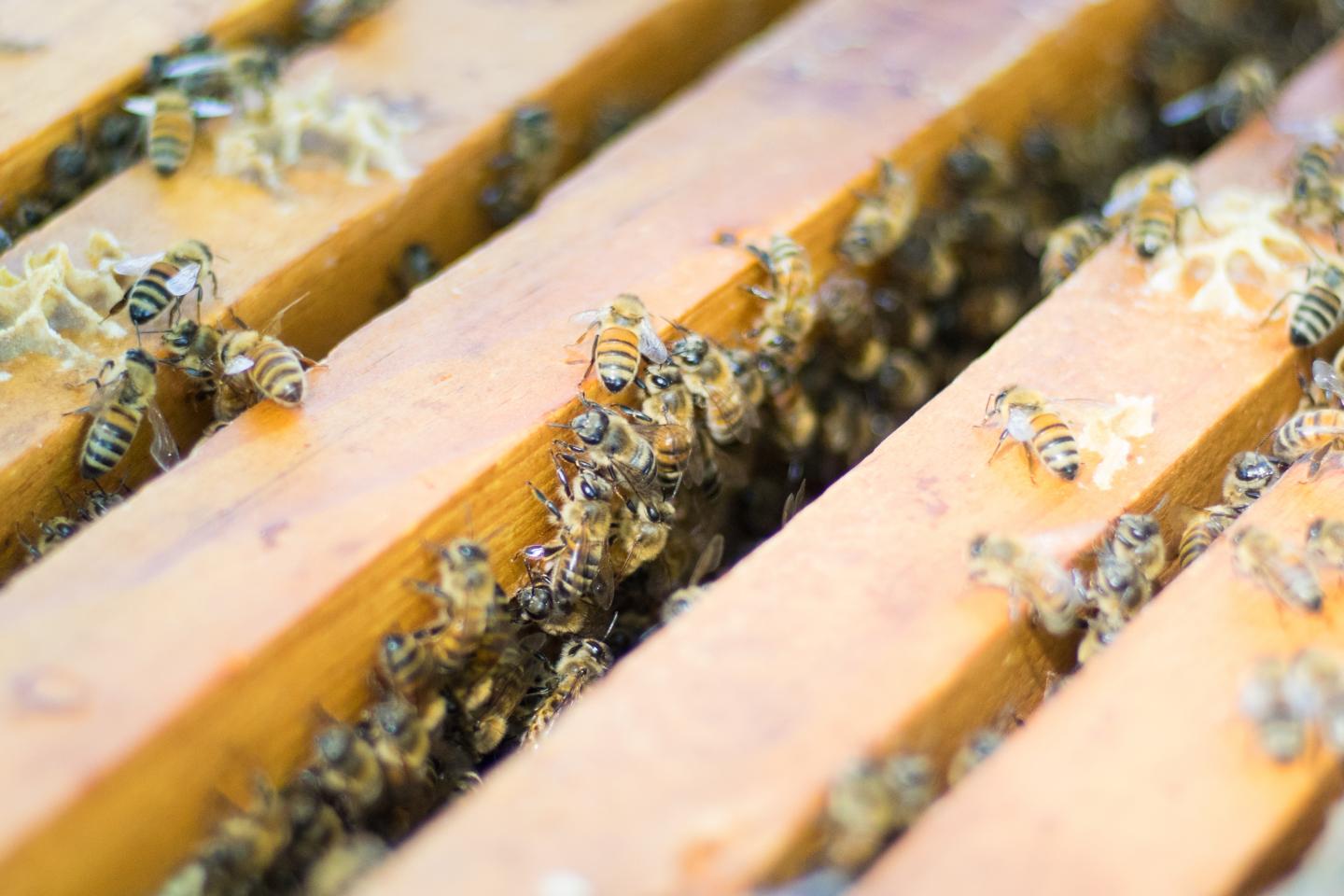
Credit: Ben Rouse
More “intensive” beekeeping does not raise the risk of diseases that harm or kill the insects, new research suggests.
Intensive agriculture – where animals or plants are kept crowded together in very high densities – is thought to result in higher rates of disease spreading.
But researchers from the University of Exeter and the University of California, Berkeley found this is not the case for honeybees.
Their study modelled the spread of multiple honeybee diseases and found that crowding many colonies together was “unlikely to greatly increase disease prevalence”.
However, the research only applies to existing honeybee diseases – and the findings suggest intensive beekeeping could accelerate the spread of new diseases.
“Crowding of animals or crops – or people – into minimal space usually increases rates of disease spread,” said Lewis Bartlett, of the University of Exeter and Emory University.
“We carried out this study because beekeepers were worried about this – especially given the many threats currently causing the decline of bees.
“To our surprise, our results show it’s very unlikely that crowding of honeybees meaningfully aids the spread of diseases that significantly harm honeybees.
“Honeybees live in close proximity to each other naturally, and our models show that adding more bees does little to raise disease risk.
“So, beekeepers don’t need to worry about how many bees they keep together as long as there is enough food for them.
“The key is not whether they encounter a disease – it’s whether they are fit and healthy enough to fight it off.”
Although the paper says intensification of beekeeping does not boost diseases among honeybees, Bartlett points out that intensive agriculture – especially use of pesticides and destruction of habitats – harms bee species including honeybees.
###
The research was partly funded by the Biotechnology and Biological Sciences Research Council and the National Institutes of Health.
The paper, published in the Journal of Applied Ecology, is entitled: “Industrial bees: The impact of apicultural intensification on local disease prevalence.”
Media Contact
Lauren Batten
[email protected]
Related Journal Article
http://dx.




